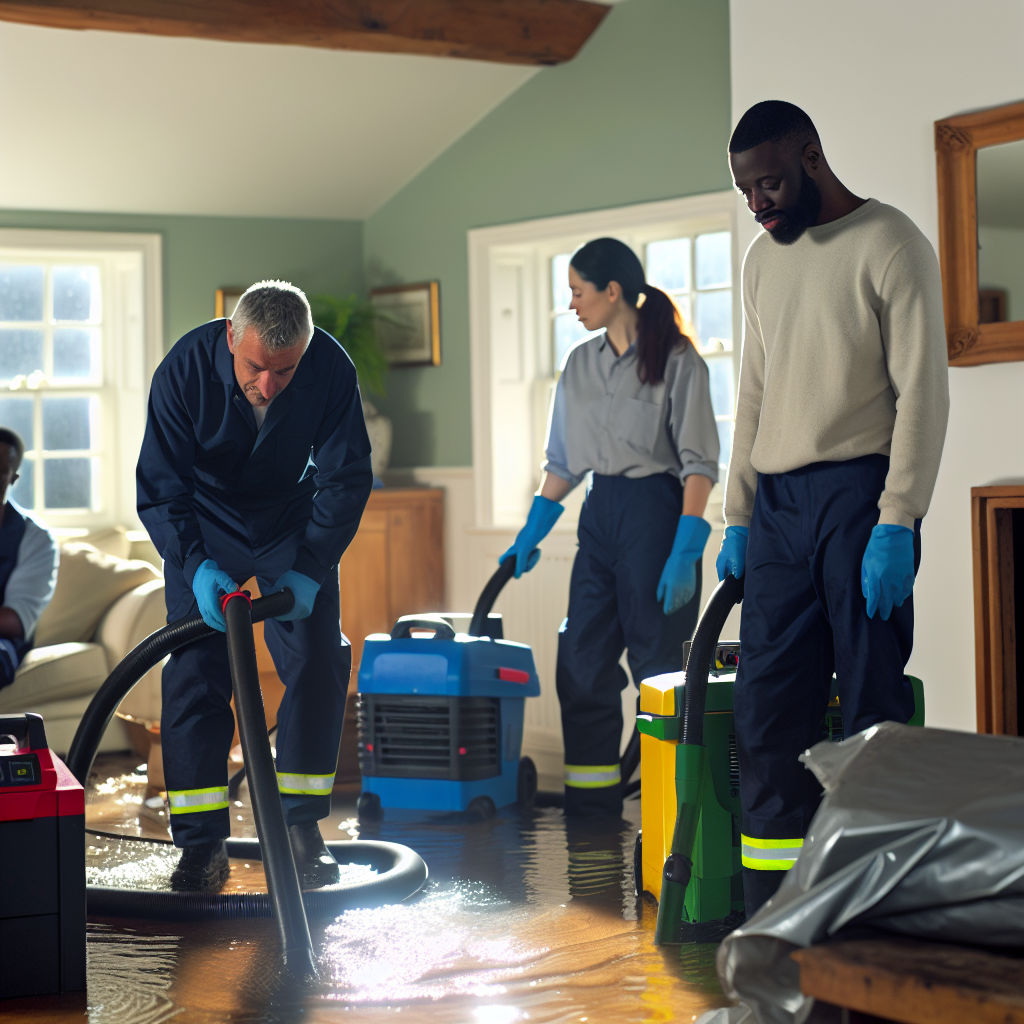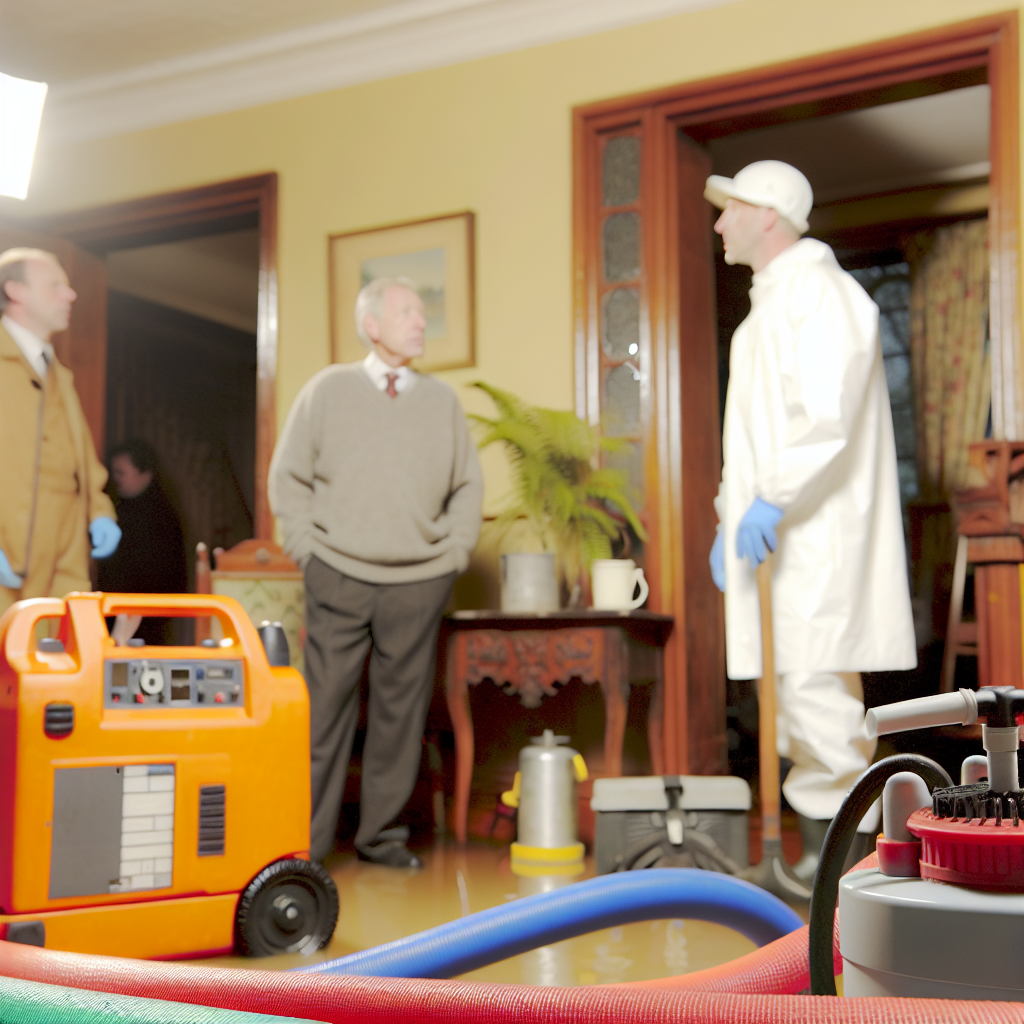Table of Contents
– Risk Assessment and Flood Mitigation
– Proactive Approach to Flood Damage Clean Up
– Time-Efficient Restoration Tactics
– Partnering with Flood Damage Restoration Professionals
– Understanding UK Regulations and Standards Pertaining to Flood Damage Restoration
– Frequently Asked Questions
Introduction
The devastating impact of flooding leaves a trail of destruction in homes across the UK, costing a whopping £1.1 billion each year, as per the UK Government’s Environment Agency[1]. Flooding emergencies may result in extensive damage to the structure, furniture, and ruin priceless possessions. This article aims to guide UK homeowners through proactive measures and best practices for flood damage clean-up and restoration, ensuring homeostasis is quickly restored.
Risk Assessment and Flood Mitigation
Understanding your home’s vulnerability to flooding and undertaking a comprehensive risk assessment is the first step in flood damage mitigation. This entails analysing the topography of your home, the previous history of your location with flooding, and identifying possible areas of water seepage[2]. Armed with this knowledge, you can install flood prevention measures such as door barriers, air brick covers, and pumps[3].
Proactive Approach to Flood Damage Clean Up
In the event of flood damage, being proactive rather than reactive minimizes long term consequences. Firstly, document all the flood damage for insurance claim purposes[4]. Next, ensure the electrical power is off before embarking on cleaning up to prevent electrocution[5]. Opt for thorough cleaning and sanitization to ward off diseases carried by floodwaters.
Time-Efficient Restoration Tactics
Prompt restoration after a flood is vital to stifle mould growth and structural damage. Begin with disposing of ruined items, followed by cleaning, drying and deodorization. For walls, flooring, and furniture, professional assessment might be required to determine what can be salvaged. Time is of the essence – it’s crucial to start this process within 48 hours after a flood[6].
Partnering with Flood Damage Restoration Professionals
While certain minor clean-up tasks can be DIY, professional flood damage restoration companies should be considered for major restoration work. Experts in the industry note, “Professionals have the equipment, training, and experience necessary to do the job correctly and safely the first time”[7].
Understanding UK Regulations and Standards Pertaining to Flood Damage Restoration
It’s crucial to familiarize oneself with UK regulations and standards for flood damage restoration to guarantee safety and compliance. According to the British Standards Institution, there are numerous regulations to adhere to when restoring your property post-flooding[8].
Frequently Asked Questions
What are some immediate measures to consider during a flood?
How can I estimate the potential flood damage risk for homeowners in the UK?
What are some time-efficient clean-up strategies to consider post-flooding?
When should one consider partnering with professional flood restoration agencies?
What are the UK standard regulations and standards related to flood damage restoration?
Conclusion
By adopting a proactive approach to flood risk assessments, implementing time-efficient clean-up and restoration strategies, and partnering with flood damage restoration professionals, homeowners can significantly reduce the impact of flooding. The importance of knowledge about UK regulations and standards related to flood damage restoration cannot be overstated. The road to recovery post a flooding event might be daunting, but with the right plans in place, it needn’t be insurmountable.
References
[1] Environment Agency. (2019). “The long term flood risk”. UK Government. Link
[2] Author name. (Year). “Title of Publication”. Source Name. Link
[3] UK Government. (2017). “How to prepare for flooding”. gov.uk. Link
[4] Financial Conduct Authority. (2020). “What to do if your home is flooded”. FCA. Link
[5] Health and Safety Executive. (2020). “Electrical safety and you”. HSE. Link
[6] British Damage Management Association. (Year). “Damage Management Code of Practice”. BDMA. Link
[7] National Flood Forum. (Year). “Recovering after a flood”. NFF. Link
[8] British Standards Institution. (Year). “Standards for flood protection products”. BSI. Link




